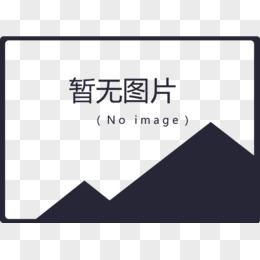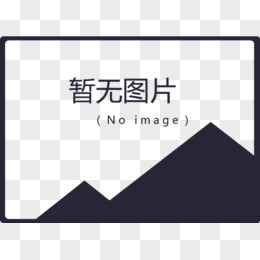cocos2dx 程序中处理cocostdio导出的帧动画
在 “形体模式” 下(文件下面),从资源中添加动画的起始图片, 然后切换到 “动画模式” 下,下面会出来一个动画帧的框, 旁边默认生成的layer几就是你刚才添加的起始动画的纹理文件, 然后从资源中, 选中剩下的动画,图片,用鼠标拖动到该区域。OK,动画已经添加好, 上面可以播放。

然后说一下动作列表: 一个动作列表中可以添加很多动画 ,这些动画都是跟着这个动作列表一起播放的。
如果想单独的播放某个动画,就新建一个动作列表,然后添加动画吧。
程序效果图:(工程名称:D:\cocos2d-x-3.0alpha1\projects\cocostudioAnimationTest1)
<!–more–>

导入的纹理解析出来会花屏, 不知道怎么回事。
主要代码:helloworld.h
#ifndef __HELLOWORLD_SCENE_H__
#define __HELLOWORLD_SCENE_H__
#include “HelloWorldScene.h”
#include “cocos2d.h”
#include “extensions\cocos-ext.h”
#include “cocostudio\CocoStudio.h”
#include “GUI\CocosGUI.h”
USING_NS_CC;
USING_NS_CC_EXT;
using namespace cocostudio;
using namespace gui;
class HelloWorld : public cocos2d: ayer
ayer
{
public:
// there’s no ‘id’ in cpp, so we recommend returning the class instance pointer
static cocos2d::Scene* createScene();
// Here’s a difference. Method ‘init’ in cocos2d-x returns bool, instead of returning ‘id’ in cocos2d-iphone
virtual bool init();
void buttonTextCallBack(Object *pSender, gui::TouchEventType type);
// a selector callback
void menuCloseCallback(Object* pSender);
map<int, char *> UIButtonTextMap;
// implement the “static create()” method manually
CREATE_FUNC(HelloWorld);
};
#endif // __HELLOWORLD_SCENE_H__
hellpworldscene.cpp
#include “HelloWorldScene.h”
USING_NS_CC;
const int cocostdioTest = 10;
Scene* HelloWorld::createScene()
{
// ‘scene’ is an autorelease object
auto scene = Scene::create();
// ‘layer’ is an autorelease object
auto layer = HelloWorld::create();
// add layer as a child to scene
scene->addChild(layer);
// return the scene
return scene;
}
// on “init” you need to initialize your instance
bool HelloWorld::init()
{
//////////////////////////////
// 1. super init first
if ( !Layer::init() )
{
return false;
}
Size visibleSize = Director::getInstance()->getVisibleSize();
Point origin = Director::getInstance()->getVisibleOrigin();
/////////////////////////////
// 2. add a menu item with “X” image, which is clicked to quit the program
//you may modify it.
// add a “close” icon to exit the progress. it’s an autorelease object
auto closeItem = MenuItemImage::create(
“CloseNormal.png”,
“CloseSelected.png”,
CC_CALLBACK_1(HelloWorld::menuCloseCallback, this));
closeItem->setPosition(Point(origin.x + visibleSize.width – closeItem->getContentSize().width/2 ,
origin.y + closeItem->getContentSize().height/2));
// create menu, it’s an autorelease object
auto menu = Menu::create(closeItem, NULL);
menu->setPosition(Point::ZERO);
this->addChild(menu, 1);
/////////////////////////////
// 3. add your codes below…
// add a label shows “Hello World”
// create and initialize a label
auto label = LabelTTF::create(“Hello World”, “Arial”, 24);
// position the label on the center of the screen
label->setPosition(Point(origin.x + visibleSize.width/2,
origin.y + visibleSize.height – label->getContentSize().height));
// add the label as a child to this layer
this->addChild(label, 1);
// add “HelloWorld” splash screen”
auto sprite = Sprite::create(“HelloWorld.png”);
// position the sprite on the center of the screen
sprite->setPosition(Point(visibleSize.width/2 + origin.x, visibleSize.height/2 + origin.y));
// add the sprite as a child to this layer
this->addChild(sprite, 0);
//加入UI 编辑器
UILayer * uiLayer = UILayer::create();
auto myLayOut = GUIReader::shareReader()->widgetFromJsonFile(“NewProject_1/NewProject_1.ExportJson”);
uiLayer->addWidget(myLayOut);
this->addChild(uiLayer, 5);
//添加buttonText 名字
UIButtonTextMap.insert(map<int, char*>::value_type(1, “TextButton_23″));
UIButtonTextMap.insert(map<int, char*>::value_type(2, “TextButton_27″));
UIButtonTextMap[3] = “TextButton_28″;
UIButtonTextMap[4] = “TextButton_29″;
UIButtonTextMap[5] = “TextButton_31″;
UIButtonTextMap[6] = “TextButton_32″;
UIButtonTextMap[7] = “TextButton_33″;
UIButtonTextMap[8] = “TextButton_34″;
//c++11
auto mapbag = UIButtonTextMap.begin();
//decltype() 获取当前类型
typedef decltype(mapbag) CurrentType;
CurrentType mapend = UIButtonTextMap.end();
for (;mapbag != mapend; ++mapbag)
{
/*log(“-frist:%d”, mapbag->first);
log(“-second:%s”, mapbag->second);*/
auto pButtonText = dynamic_cast<UIButton*>(myLayOut->getChildByName(mapbag->second));
pButtonText->setTouchEnabled(true);
pButtonText->setTag(mapbag->first);
pButtonText->setTitleText(mapbag->second);
pButtonText->addTouchEventListener(this, toucheventselector(HelloWorld::buttonTextCallBack));
}
ArmatureDataManager::getInstance()->addArmatureFileInfo(“test1_2/test1.ExportJson”);
//create 中间的名字为 项目的名称 也就是test1.ExportJson 去掉后缀的名字或是打开该文件 中的第一个name中的 字符串
Armature * armature = Armature::create(“test1″);
armature->setTag(cocostdioTest);
armature->setPosition(Point(visibleSize.width/2, visibleSize.height/2+100));
addChild(armature);
return true;
}
void HelloWorld::menuCloseCallback(Object* pSender)
{
Director::getInstance()->end();
#if (CC_TARGET_PLATFORM == CC_PLATFORM_IOS)
exit(0);
#endif
}
void HelloWorld::buttonTextCallBack(Object *pSender, gui::TouchEventType type)
{
//获取调用该方法的的tag 从而确定是那个buttonText
auto uiBt = dynamic_cast<UIButton*>(pSender);
auto armature = (Armature *) this->getChildByTag(cocostdioTest);//this == scene
if (!uiBt)
{
return;
}
int uiBtTag = uiBt->getTag();
switch (type)
{
case TouchEventType::TOUCH_EVENT_ENDED:
switch (uiBtTag)
{
case 1:
//play 中的名字为cocostdio 动画编辑器中的动作列表的名字
armature->getAnimation()->play(“Animation1″);
break;
case 2:
armature->getAnimation()->play(“Animation2″);
break;
case 3:
armature->getAnimation()->play(“Animation3″);
break;
case 4:
armature->getAnimation()->play(“Animation2_Copy1″);
break;
case 5:
armature->getAnimation()->play(“Animation4″);
break;
default:
break;
}
break;
default:
break;






